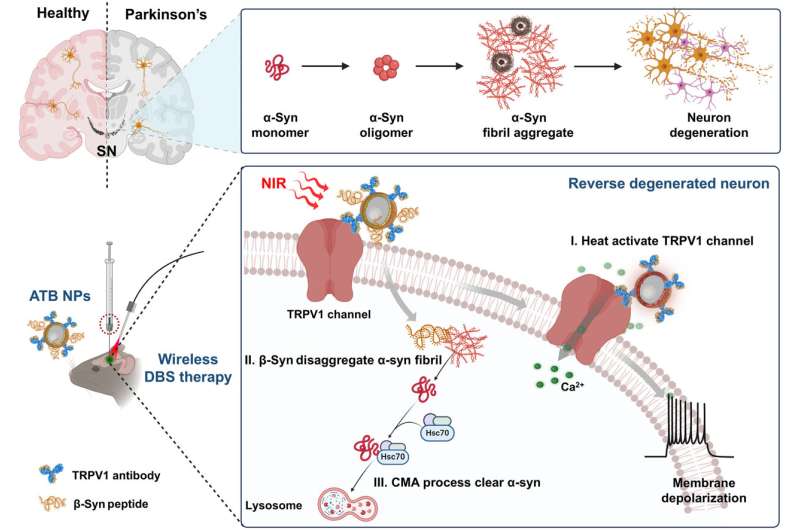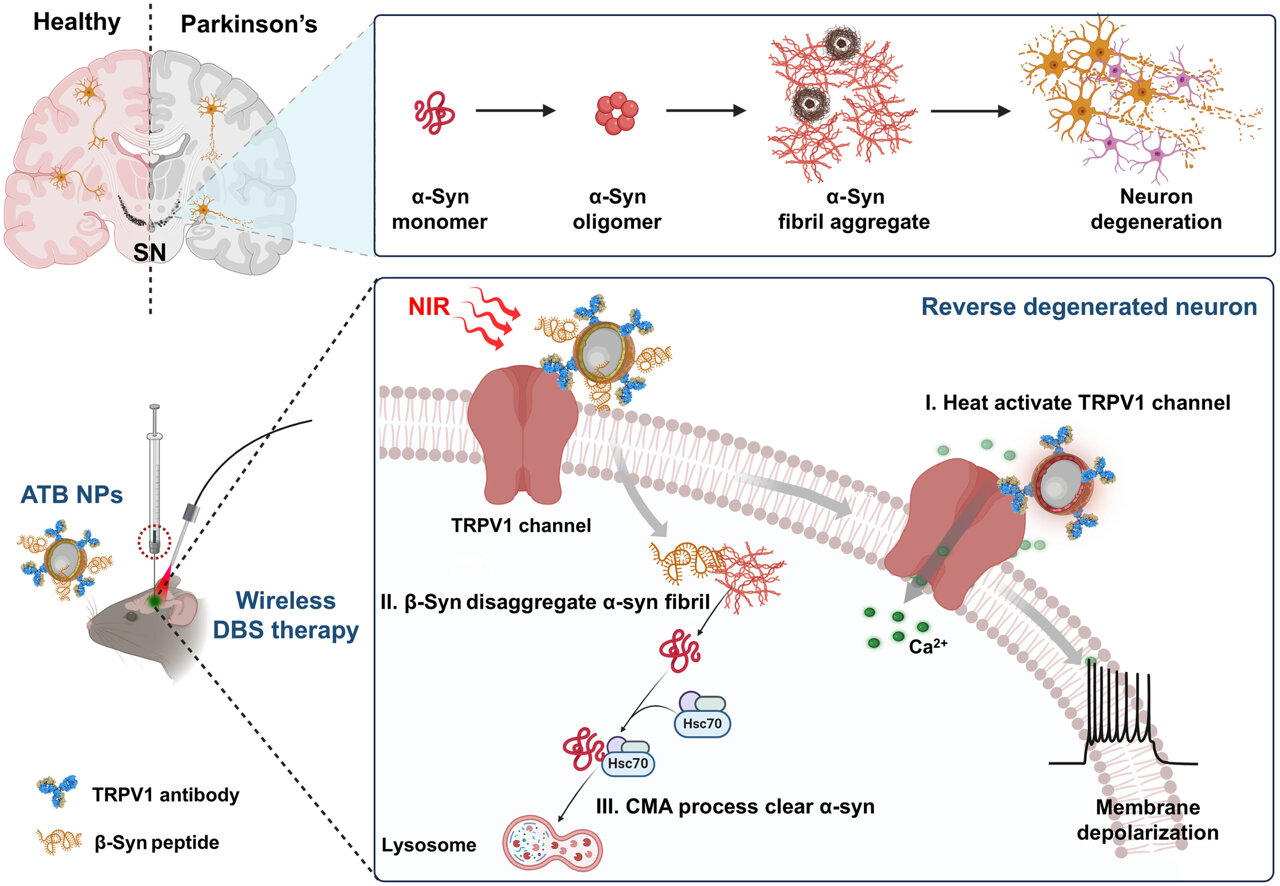
Parkinson’s disease (PD) is the second most common neurodegenerative disorder, primarily characterized by motor dysfunction. Its pathological hallmark is the abnormal aggregation of α-synuclein (α-syn) into insoluble fibrils and Lewy bodies, leading to the degeneration and death of dopaminergic neurons in the substantia nigra of the midbrain.
To ameliorate motor symptoms in patients, a common clinical approach, deep brain stimulation (DBS), involves the implantation of electrodes into specific brain regions to modulate neuronal activity through direct electrical stimulation.
Although DBS enhances the efficiency of neuronal regulation, its invasive nature can lead to cognitive decline and emotional disturbances such as depression and anxiety. Newly developed non-invasive techniques such as transcranial direct current stimulation and transcranial magnetic stimulation can enhance cortical excitability but are limited by insufficient penetration depth and spatial resolution.
Therefore, the development of non-invasive deep brain stimulation technologies that combine high spatial resolution with strong penetration capabilities is crucial.
In a study published in Science Advances, a research team led by Prof. Chen Chunying from the National Center for Nanoscience and Technology (NCNST) of the Chinese Academy of Sciences designed a wireless photothermal DBS nanosystem named ATB NPs.
This system achieves precise modulation of degenerated neurons by directly stimulating the endogenous expression of the thermosensitive TRPV1 receptor in neurons, which offers new insights into the treatment of PD and other neurodegenerative disorders.
This system consists of three core modules: a photothermal conversion module (gold nanoshells, AuNSs) for activating the thermosensitive TRPV1 ion channels, a targeting module (TRPV1 antibody) to specifically target dopaminergic neurons with high TRPV1 expression, and a degradation module (β-syn peptide, containing a near-infrared-responsive linker) that binds to the hydrophobic domain of the non-amyloid-β component of α-synuclein, thereby degrading α-syn fibrils.
Using α-syn fibril-induced PD model, researchers aimed to restore the degenerated dopaminergic neurons in the substantia nigra of the midbrain by the wireless DBS nanosystem.
After stereotactic injection of ATB NPs into the substantia nigra of PD mice, the ATB NPs anchored to the surface of dopaminergic neurons via the TRPV1 antibody. Under 808 nm pulsed near-infrared laser irradiation, they act as nanoantennas, converting light into heat to activate the thermosensitive TRPV1 receptor, leading to Ca2+ influx and the generation of action potentials.
In addition, they release β-syn peptides, which, through the activation of chaperone-mediated autophagy pathways, clear α-syn aggregates, reducing pathological fibrils. Ultimately, the ATB NPs restored the interactive network of dopaminergic neurons and their dopamine release capacity, improving motor function in PD mice.
This wireless DBS nanosystem primarily has three advantages: It leverages the endogenously expressed TRPV1 receptors in dopaminergic neurons of the substantia nigra, eliminating the need for implanted neural electrodes or genetic manipulation; it enables precise spatiotemporal modulation of degenerative neurons in specific brain regions by integrating near-infrared laser technology; and the wireless DBS nanosystem exhibits excellent biosafety.
More information: Junguang Wu et al, A nanoparticle-based wireless deep brain stimulation system that reverses Parkinson’s disease, Science Advances (2025). DOI: 10.1126/sciadv.ado4927
Provided by Chinese Academy of Sciences
Citation: Nanoparticles restore neurons in Parkinson’s with wireless brain stimulation (2025, January 16) retrieved 16 January 2025 from https://phys.org/news/2025-01-nanoparticles-neurons-parkinson-wireless-brain.html
This document is subject to copyright. Apart from any fair dealing for the purpose of private study or research, no part may be reproduced without the written permission. The content is provided for information purposes only.



